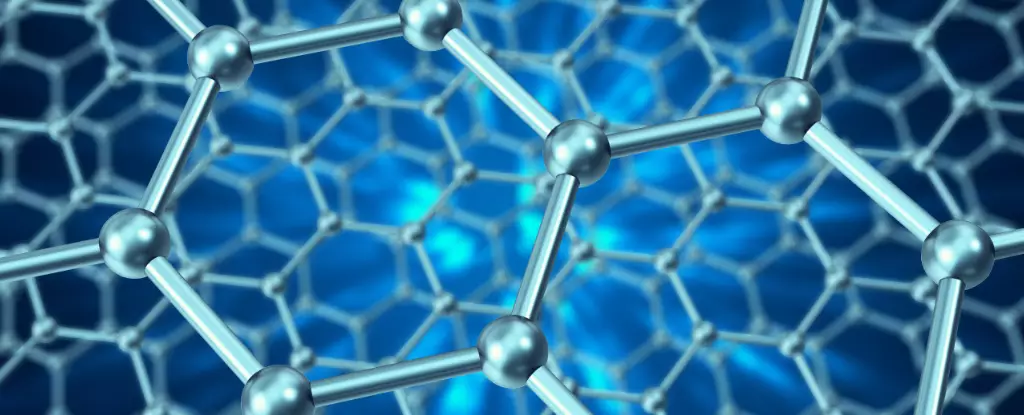Graphene, a two-dimensional material crafted from a single layer of carbon atoms arranged in a honeycomb structure, is often celebrated for its remarkable electrical, thermal, and mechanical properties. In recent years, interest in graphene has surged, particularly among physicists and materials scientists, as it presents a unique platform for exploring advanced electronic phenomena and potential applications in quantum computing. A collaborative research effort among institutions including the University of British Columbia, the University of Washington, Johns Hopkins University, and the National Institute for Materials Science in Japan has led to groundbreaking discoveries that shed light on the complex behavior of electrons in twisted layers of graphene.
The research team has identified a new state of matter that challenges conventional understandings of electron dynamics in crystalline materials. This discovery deepens our comprehension of how electrons conduct electricity and interact when confined in tightly packed structures. The ability of electrons to ‘hop’ between carbon atoms forms the basis of graphene’s conductive properties, making it surprisingly similar to traditional conductors like copper, a fact that underscores its potential in electronics.
In their investigations, the researchers manipulated individual layers of graphene, creating what is known as the moiré effect. By twisting these graphene sheets at specific angles, they altered the arrangement of the carbon atoms, generating a new electronic landscape. This moiré pattern, a phenomenon frequently observed in everyday materials such as mesh screens, plays a crucial role in dictating the behavior of electrons within the graphene.
A significant outcome of this manipulation is the formation of a Wigner crystal, an arrangement where electrons, under particular conditions, exhibit a structured, frozen state rather than behaving as a fluid. The researchers have elucidated that the interplay between the moiré pattern and the electron arrangement leads to unexpected characteristics; for instance, while the electrons are ‘frozen’ into a crystal form, they maintain the ability to conduct electricity along the material’s edges. This duality presents a new paradigm for electron behavior, radically different from historical interpretations of Wigner crystals.
The implications of this research are profound, especially in the context of quantum computing. Traditional qubit systems are largely reliant on maintaining coherence among fundamental particles. However, the newly observed topological states in twisted graphene layers could pave the way for more robust qubits that can perform computations with increased resilience against environmental disturbances. The paradoxical behavior of conducting electricity along the boundaries of a crystal, while simultaneously exhibiting behaviors reminiscent of a Wigner crystal, raises intriguing questions about electron interaction in quantum mechanics.
Moreover, the potential for achieving room-temperature superconductivity has tantalized scientists for years. The unique electronic states facilitated by twisted structures in graphene could lead to breakthroughs in creating materials that conduct electricity without resistance at ambient temperatures. This would hold transformative promise for a wide array of applications, from energy transmission to advanced computing technologies.
The research findings on the novel states of matter in twisted graphene present a crucial advancement in material science and condensed matter physics. Understanding the dynamics of electrons within graphene under various manipulations invites a wealth of future possibilities. As researchers continue to unravel the complex behaviors exhibited by electrons in these unique environments, the door opens to innovative technologies that could redefine electronics and computational paradigms.
While the current study stands as a foundation, the exploration of graphene’s unexplored characteristics suggests that we have merely scratched the surface of its potential. The journey through this labyrinth of carbon structures is indeed just beginning, and the scientific community awaits further revelations that can emerge from this fascinating material.


Leave a Reply